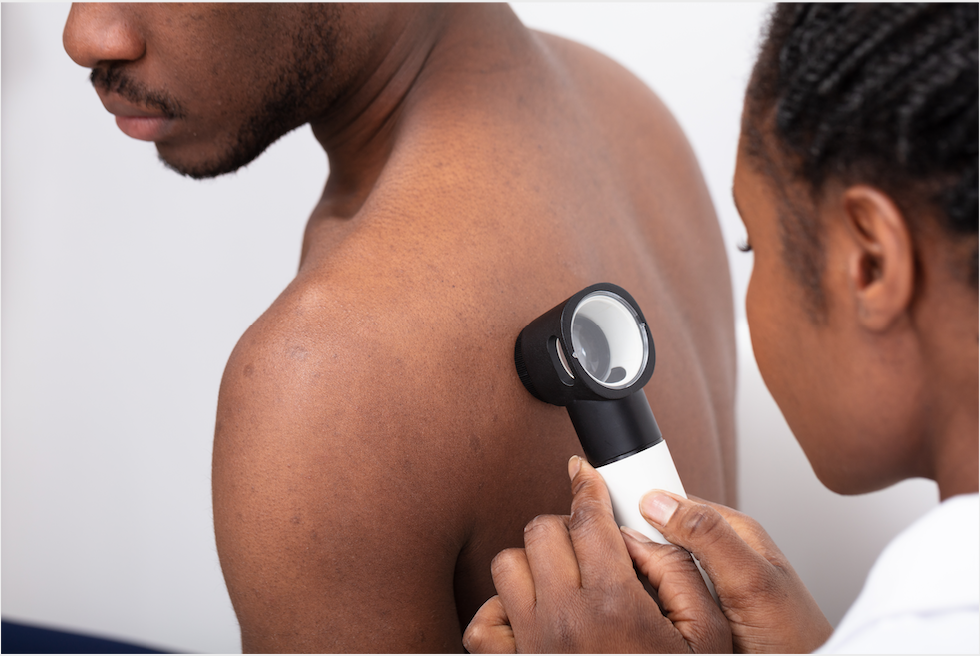Teledermoscopy is as accurate at identifying skin cancers as having a dermatologist do so in person, a new study in the Journal of the American Academy of Dermatology shows.
Their new system, which the researchers call SpotCheck, enables skin cancer specialists to remotely examine skin lesions using dermoscopy.
While previous research has explored telemedicine options for speeding diagnoses of melanoma and compared in-person and remote evaluation of dermoscopy images, the authors say their work is among the first to target skin growths identified first by concerned patients rather than by primary care physicians. This is important as most cases of melanoma are initially spotted by patients or their friends and family.
Led by a team at NYU Langone Health and its Perlmutter Cancer Center, the new analysis used SpotCheck to evaluate dermoscopic images of 375 skin lesions from volunteers who were concerned that their skin blemishes might be cancerous. Dermoscopy experts who remotely reviewed all of the samples were 91% accurate in their diagnoses, based on later biopsies. Dermatologists who performed an evaluation of all of the volunteers in a doctor’s office had an accuracy of 93%.
“Our findings suggest that this method of teledermoscopy may not only help healthcare providers catch potentially dangerous skin cancers early, it may also reduce expensive, anxiety-causing referrals to specialists for benign lesions,” says study senior author David Polsky, MD, PhD, in a news release.
For the research, the team administered questionnaires to 147 men and women who had responded to newspaper ads after identifying suspicious lesions on their skin. The surveys assessed personal and family history of skin cancer, melanoma risk factors, and the history of each worrisome skin spot, among other factors. Then, a general dermatologist performed a physical exam using the visual appearance of the blemishes and a dermatoscope to make a diagnosis, and if needed, performed a biopsy.
Next, the study coordinator captured clinical and dermoscopic images, which were sent to a central server for remote review by a separate team of skin cancer specialists with expertise using dermoscopy. They reviewed the questionnaires and images to make their own diagnoses. This group of dermatologists was not made aware of the results of the in-person evaluation. The researchers also conducted a phone survey one week after the patients’ appointments to assess their satisfaction.
Among the findings, the study showed that overall, 97% of the evaluated lesions were later determined by biopsy to be benign. Notably, both the dermatologists who examined the participants in-person and those who instead relied on clinical photos and dermoscopy alone detected 11 out of the 13 cases of skin cancer, including two melanomas.
The results further revealed that nearly 90% of the patients were satisfied with the telemedicine experience, with one-fifth reporting that they preferred this method of exam over an in-person appointment with a specialist.
“A key advantage of teledermoscopy platforms is that community health workers can be trained to collect images and send them out for expert review,” says Polsky, the Alfred W. Kopf, MD, Professor of Dermatologic Oncology at NYU Grossman School of Medicine. “As a result, this technology could be used in the future to offer virtual triage services in walk-in clinics, pharmacies, and community centers.”
Polsky, also a professor in the Department of Pathology at NYU Grossman School of Medicine, adds that next, the research team plans to identify neighborhoods with higher rates of late-stage melanoma for possible SpotCheck deployment.
He cautions that the tool is meant to assess specific skin concerns and is not a substitute for a full-body check in a doctor’s office. The participants in the study had to limit their lesions of concern to three.


